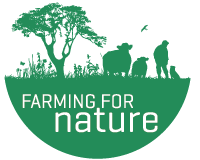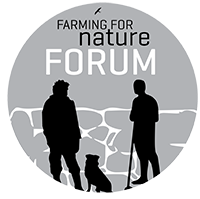There are so many good examples of best practice amongst the nominations that we receive every year for our Farming for Nature Ambassador awards. We want to highlight some of these stories in each newsletter. Here we have James Foley, a dairy farmer from Co. Waterford. James is passionate about enhancing all aspects of nature on his land starting with changing his relationship with Nitrogen. Here is his story, in his own words:
Nitrogen recently hit the headlines in the Irish farming press “the increase in fertiliser prices has taken many farmers by surprise”. Has it really? Nitrogen has been steadily rising in price since well before I was born. The grassland of choice in Ireland for the past several decades has been monocultures of perennial ryegrass(PRG) and according to Teagasc in 2020, the recommended rate of 250kg Nitrogen/ha would have set you back €460/ha including spreading costs to grow a decent crop. That’s €18,600 for a 100 acre farm.
The indirect costs are just as high. Plant uptakes of artificial nitrogen are usually well below 50%, some ends up in our groundwater, a lot goes up as nitrous oxide, a potent greenhouse gas. Biodiversity also is usually quite low, as is the case in most monoculture cropping systems.
Fortunately, there is a solution which ticks the boxes for both farmers pockets and the environment. Multiple species swards (Mss) consist of a polyculture of different pasture species with grasses, legumes and herbs grown together. I have been researching these swards ever since 2015 when I read an article in the Farmers Weekly about a UK farmer who drastically cut his input costs and managed to maintain his yields. I kept researching and I found more and more studies that showed similar results. The common theme was that there is an “Overyielding Effect” when including multiple species over what would be expected if those plants were grown as a monoculture.
After I saw the initial highly positive results of the Smartgrass Trials in UCD, in 2018 I decided to take the plunge and plant 20 acres of an 18 species mix (6 grasses, 6 legumes and 6 herbs) that I got from Cotswolds Seeds in the UK. No post emergent spray can be used and I was quite worried that I would have a huge flush of docks. This however didn’t materialise as there was enough competition from the deep rooted herbs to stave off the docks. I also cut out the bagged Nitrogen, the clovers flourished and provided what the grasses and herbs needed. Yields have been excellent and the cows love the variety of species on offer. Nutritionists have known for a long time when formulating rations that mixing a variety of ingredients produces a more balanced diet as no single plant can provide everything an animal requires. Perennial ryegrass has many qualities, but it cannot provide everything that a ruminant needs.
Seeing the obvious reductions in my costs on those acres, I have continued to transition my grasslands to multiple species swards. The increase of below and above ground biodiversity including worms, grasshoppers, bees, butterflies and the birds that follow them have become more noticeable to my untrained eyes, ears and nose.

